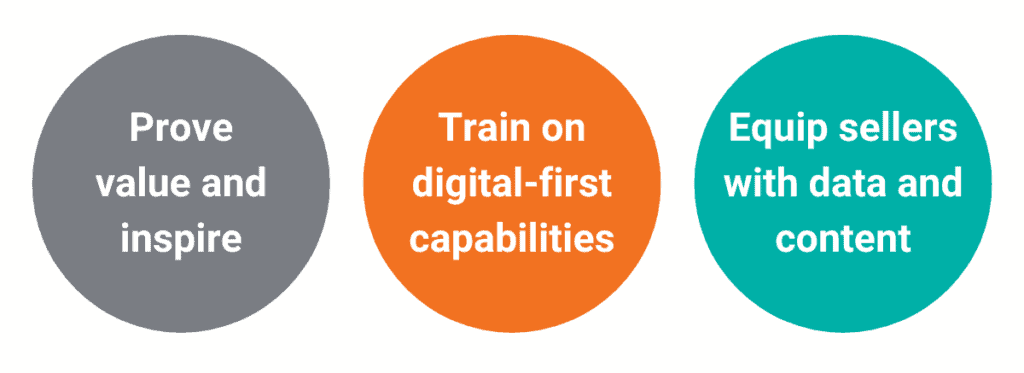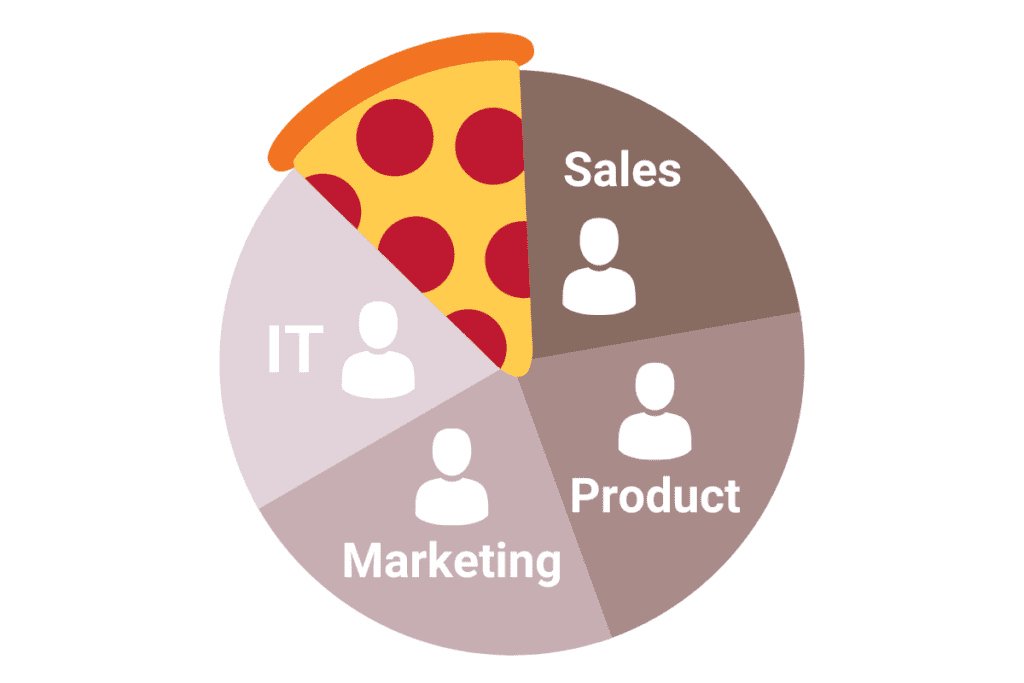
Engage Martech’s Future of Martech Conference was so insightful, Saniul Ali and I felt inspired to write up a blog post about what we learned. Here are our top four insights of the day that will lead us to take action both internally and to recommend to our customers.
Sales and Marketing alignment
Sales is changing – fast! There are now on average 13 stakeholders involved in a complex sale, up from six just a few years ago. Decision-makers are also much more often remote workers – in fact 60% of decision-makers are hybrid-working. The power of the brand is now inextricably linked with customer experience, with buyers only spending 5% of time in the sales process with a salesperson. And, of course, the big issue of the day: the global economy. Procurement and finance teams are cutting any ‘nice to haves’ or anything not perceived as important to the running of the business.
Sales habits have changed to keep up with where consumers are, meaning they are engaging digitally most of the time. Sales also has more data on their customers than ever before, which they need to be able to utilise to succeed. Enter Marketing!
The glue between Sales and Marketing is intelligence and Sales enablement. To get the best results from Sales enablement, there are three key priorities Marketing needs to follow:

Key Marketing Priorities: 1. Prove value and inspire 2. Train on digital-first capabilities (blend into work) 3. Equip sellers with data and content for pipeline creation
We also learned that only a third of sellers’ time is actually spent on selling. If Marketing is going to really help Sales, we need to make insights simple. We need to make a clear path to revenue generation using Marketing-generated data. Account-Based Marketing is making this possible. Marketing needs to make it clear which accounts are showing the highest number of stakeholders engaged to help Sales focus their time. And then look into the leads at those top accounts – which individuals are the most engaged? They’re your Marketing Qualified Leads. This should all be visible in one place. We’ve applied this using Salesforce Marketing Cloud Account Engagement and Einstein Analytics (B2BMA) to gain additional visibility.
Alignment with IT and other departments
Sales isn’t the only team Marketing needs to get on board to achieve its aims. As we explored in our recent MarTech Connect event, IT is a key business partner, especially when it comes to achieving success with MarTech. CMOs have the shortest lifespan on the board, often battling with CFOs and CIOs to prove ROI and seen as a major cost centre to the business.
Every department’s KPIs and priorities should be aligned with the CEO’s and leadership team’s goals. When Marketing’s priorities can be related back to these, it becomes easier to agree on KPIs with the rest of the business, as every department should also be aligned with leadership. Ultimately, constructive friction is good, as we all have (and should have) different ways of getting to the same goal.
This principle applies throughout the Marketing organisation, especially when it comes to MarTech decisions. Francisco Federico, Executive Director of Global Marketing at JLL, shared an example of making decisions around MarTech. They had identified chat bots as an opportunity to improve the customer experience and drive sales. Historically, Marketing would have owned the decision to go forward with this tactic. This would eventually cause friction as it affects other parts of the business, who find they were never previously consulted.
To avoid this, JLL now creates “pizza teams” to collaborate on projects like this from the beginning. These teams consist of one person each from IT, Marketing, Sales, and Product. They agree on a common goal for the project, which in turn allows them to set metrics as a group. They can decide on the most suitable vendor to support the project and can roll out appropriately. Ultimately this reduces friction in the long run, leading to improved outcomes and support for the project across the business.JLL’s “pizza team”

JLL’s “pizza team”
Artificial Intelligence (AI) and ethics
The uses for AI in marketing now are endless! One example shared by New Statesman’s Head of Marketing Technology, Karan Premi was using AI to produce unique images based on keywords for thumbnails. But with great power comes great responsibility… collecting consent is a challenge we can no longer ignore.
Lauren Sudworth, Head of Brand and Content at PhotoRoom, raised the controversial issue of artists’ IP. AI takes its inspiration from existing content. Once an artist’s content is online, even if it’s behind a firewall or watermarked, it can still be found and manipulated. Sudworth raised the importance of government regulation in this area. Big tech companies have ethics leaders now (except Twitter) but there’s still a long way to go for smaller organisations. They need to make it part of their DNA and hire people who want to talk culture and ethics day-to-day.
Customer-centricity
Marketing personalisation has become a necessity, with some sectors feeling the urgency more than others already. For example, Karan Premi of New Statesman referred to dynamic content personalisation. If someone visits a news site and they don’t see the stories relevant for them, will they keep returning? Most media companies that don’t keep up with this level of personalisation will quickly lose out.
Another imperative for any organisation is the ‘feedback loop’ – understanding what your customers are doing and why they are doing it. Organisations are using analytics to see what their customers respond to but they’re not always using the voice of the customer to understand why their customers behave that way. They should fuse CRM data with feedback collected from across funnel and channel. This will form contextual insights to act upon quickly and ‘close the loop’. This should be throughout the entire customer lifecycle.
Finally, an interesting point from Luba Reynolds, GTM & Sales Enablement Manager, EMEA & APAC at Adobe. Sales enablement was raised throughout the event as a top priority for Marketing – but we should be thinking about buyer enablement too. As we learned in the sales enablement presentations, customers are now mostly doing their own research and spending less time with Sales. Customers need to be able to make the case for your organisation internally. Reynolds used the example of Amazon Fresh – transactional sales have shifted to self-service. Demand generation is cheaper than Sales development. Even with more complex sales, according to Gartner, the customer is already 57% of the way through the sales process before they speak to a salesperson. Customers will be talking about us with their colleagues, so we need to make sure they’re telling the story we want them to tell.
We hope you’ve found our insights from our day of learning helpful, and that you will start incorporating some of these ideas into your own marketing plans.
Download the guide below.
Contact Us
Let's talk!
We're ready to help turn your biggest challenges into your biggest advantages.
Searching for a new career?
View job openings